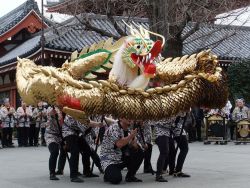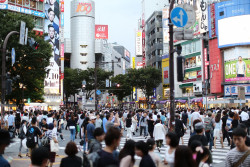
March 29, 2007
Holiday in Iraq
A journey through the Kurdish north is hardly as dangerous as it seems
By Metropolis
Originally published on metropolis.co.jp on March 2007

Photos by Yo Takatsuki
“Apprehension” might describe how I felt on boarding a flight from the Jordanian capital of Amman to the Northern Iraqi city of Erbil. Other flights departing at the same time were heading to Baghdad and Basra, scenes of some of the fiercest fighting between coalition forces and insurgents over the past four years. Most passengers on our small plane were soldiers, contractors, diplomats and fellow journalists. Stern expressions and bulky bodies clad in khaki filled the cabin.
I hoped that I would be on the return flight in two weeks, and in one piece.
Three days on, those concerns had been consigned firmly to the back of my mind. What I had experienced convinced me that northern Iraq was a haven of peace and stability simply unknown and underreported to the outside world.
Erbil (sometimes spelled Irbil or Arbil) is a dusty city on the edge of the arid Mesopotamian plains. In the city’s center is the Citadel, a red-brick fort that sits proudly on a rock outcrop. It’s claimed by some archaeologists to be the longest continually inhabited place on Earth, with some 8,000 years of recorded history. At present, the city is awash with foreign investment and is a jungle of construction cranes.

Erbil is the center of the regional Kurdish government that has been in control of the three most northerly Iraqi states since 1991. Yet it is only since 2003, after the US sent troops in, that the Kurds have started to enjoy the fruits of relative autonomy.
Making up a quarter of the country’s population, the Kurds went through notoriously difficult times under the rule of Saddam Hussein. During the Al-Anfal campaign of the ’80s, an estimated 180,000 of them were killed. It’s no surprise, then, that residents now take the issue of security seriously.
While the rest of the country is embroiled in a daily cycle of killing, the last attack in Kurdish Iraq was back in the summer of 2005. A long series of checkpoints on the road out of the region and a strong security presence has enabled the Kurds to enjoy an unprecedented period of peace. Many Iraqis in other areas of the country choose Iraqi Kurdistan for their vacations.

One such tourist, Wasini from Baghdad, was enjoying her first holiday in years. “The city is peaceful and beautiful. There are no terrorists and bombs,” she told me.
That sentiment is shared by Major Neil Kettering of the US Army, who is stationed in the volatile Tigris Valley. “Here we have a lot more freedom to walk around,” he says. “In other parts of Iraq you can’t do that. People here don’t look at us as occupiers. They understand why we are here. Kurdistan is what we perceived all of Iraq would be like after the fall of Saddam.”
No wonder, then, that the Kurdish Regional Government has recently created a Ministry of Tourism, which hopes to attract foreign travelers and dispel the myth that all of Iraq is dangerous. But the minister, Nimrud Baito, concedes he has an uphill struggle. “That is our main problem, because all people think of Kurdistan from a security point as the same as Iraq. But it’s very different here.”
While visiting, our evenings were best spent in hotel bars hanging out with a ramshackle collection of American oilmen, British mercenaries and Iranian spies. If Rudyard Kipling were alive now, he would agree that this was the edge of the “Great Game.” The talk was all the same, and I soon felt compelled to leave Erbil to head for the mountains.
Almost immediately upon leaving the city limits, the dramatic mountain scenery takes one’s breath away. Surely, this is where the key to Iraqi Kurdistan’s success as an international tourist destination lies. The four-hour overland trip to the town of Suleimaniyah is a breathtaking journey that passes countless peaks and lakes. A local saying, “Kurds have no friends but the mountains,” is a poignant reflection of the long years the people spent fighting Saddam’s regime.
Suleimaniyah was the heart of the resistance movement and, personally, the highlight of my trip. Surrounded on all sides by hills, this sophisticated university town is a maze of parks, cafés and tree-lined avenues. As I sipped tea alongside mustached men absorbed in boisterous games of dominos, it was all too easy to forget this was Iraq at all—yet the war was just 30km away.
Should the cycle of violence ever end, there is no doubt that this beautiful country, steeped in history and civilization, will be a powerful lure for travelers who seek a truly moving destination.
It has become quite easy to fly in to Northern Iraq since the reopening of Erbil International Airport (which will unveil a new terminal later this year). One of the best routes from Tokyo is via Vienna on Austrian Airlines (03-5222-5454). There are flights in and out of Erbil from the Austrian capital three times a week. Royal Jordanian also operates twice weekly services from Amman. There are a handful of hotels in Erbil catering to foreign travelers. The most famous (and expensive) is the large, modern Erbil International, nicknamed “The Sheraton.” The Hawler Plaza is a comfortable alternative next to the soccer stadium. In Suleimaniyah, the Palace Hotel and Ashti provide similar levels of service. Iraq is firmly a cash society, and it can be difficult to exchange traveler’s checks. US dollars are accepted, though any change will be in Iraqi dinar. The old notes with pictures of Saddam are available in gift shops, but are no longer acceptable currency. Visas can be pre-arranged by contacting the Iraqi Embassy in Japan (www.iraqi-japan.com), or can be obtained upon arrival at the airport in Erbil.
[geo_mashup_map]







